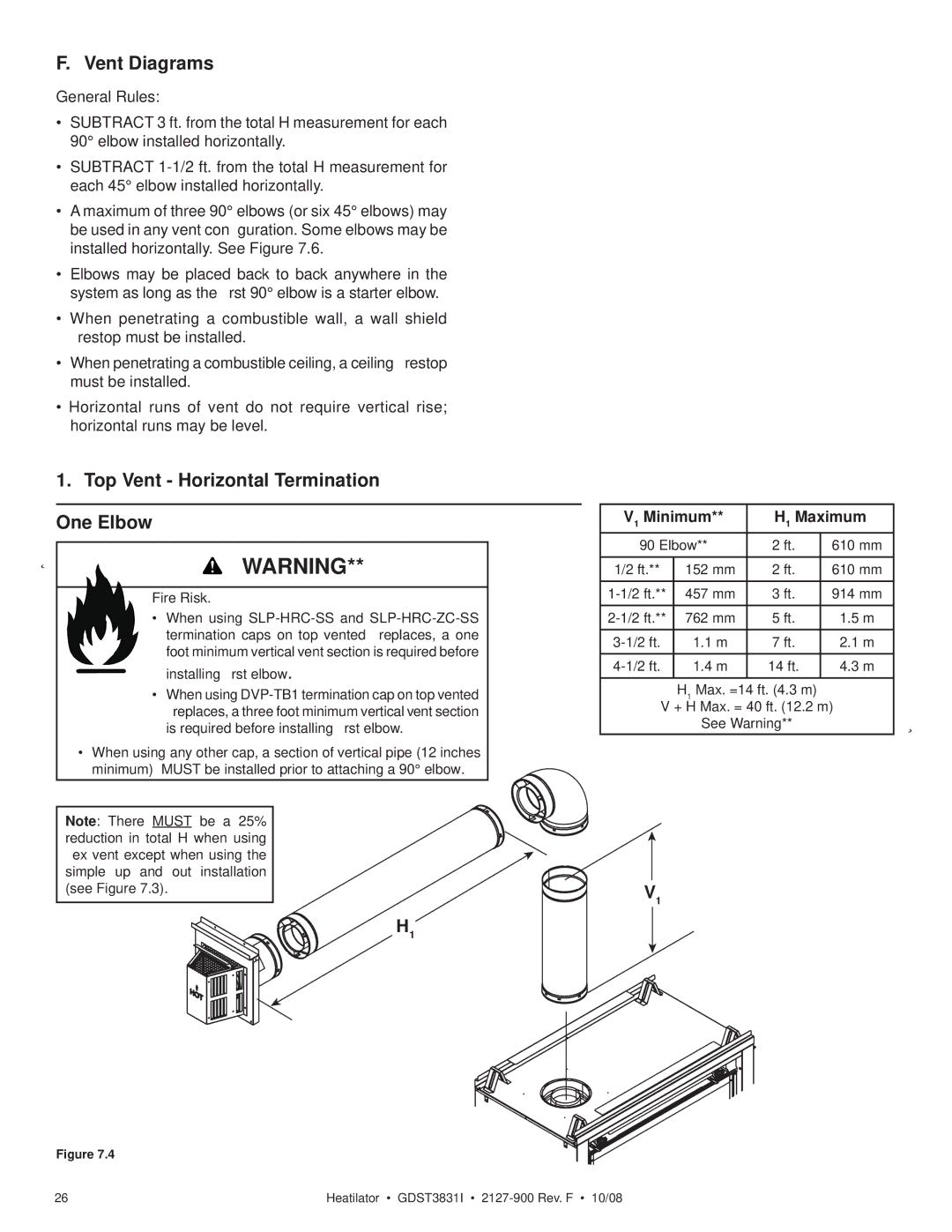
F. Vent Diagrams
General Rules:
•SUBTRACT 3 ft. from the total H measurement for each 90° elbow installed horizontally.
•SUBTRACT
•A maximum of three 90° elbows (or six 45° elbows) may be used in any vent configuration. Some elbows may be installed horizontally. See Figure 7.6.
•Elbows may be placed back to back anywhere in the system as long as the first 90° elbow is a starter elbow.
•When penetrating a combustible wall, a wall shield firestop must be installed.
•When penetrating a combustible ceiling, a ceiling firestop must be installed.
•Horizontal runs of vent do not require vertical rise; horizontal runs may be level.
1.Top Vent - Horizontal Termination One Elbow
WARNING**
Fire Risk.
•When using
installing first elbow.
•When using
•When using any other cap, a section of vertical pipe (12 inches minimum) MUST be installed prior to attaching a 90° elbow.
Note: There MUST be a 25% reduction in total H when using flex vent except when using the simple up and out installation (see Figure 7.3).
H1
Figure 7.4
V1 Minimum** | H1 Maximum | ||
|
|
|
|
90 Elbow** | 2 ft. | 610 mm | |
|
|
|
|
1/2 ft.** | 152 mm | 2 ft. | 610 mm |
|
|
|
|
457 mm | 3 ft. | 914 mm | |
762 mm | 5 ft. | 1.5 m | |
1.1 m | 7 ft. | 2.1 m | |
|
|
|
|
1.4 m | 14 ft. | 4.3 m | |
H1 Max. =14 ft. (4.3 m)
V + H Max. = 40 ft. (12.2 m)
See Warning**
V1
26 | Heatilator • GDST3831I • |
